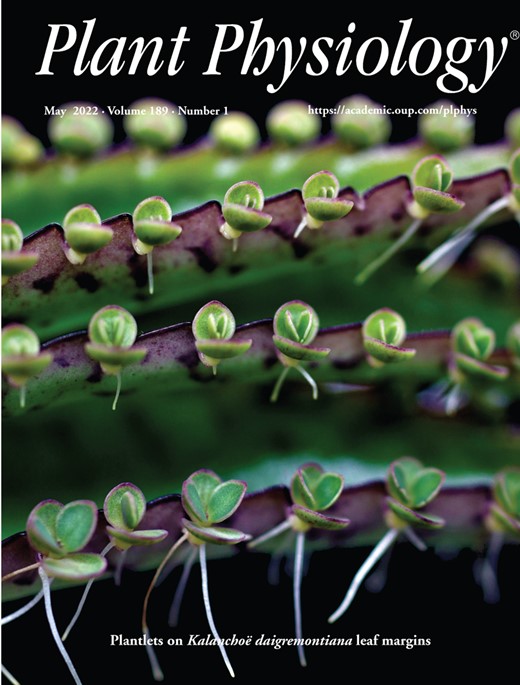Ver ítem
- xmlui.general.dspace_homeCentros Regionales y EEAsCentro Regional Buenos Aires NorteEEA PergaminoArtículos científicosxmlui.ArtifactBrowser.ItemViewer.trail
- Inicio
- Centros Regionales y EEAs
- Centro Regional Buenos Aires Norte
- EEA Pergamino
- Artículos científicos
- Ver ítem
Expressing the sunflower transcription factor HaHB11 in maize improves waterlogging and defoliation tolerance
Resumen
The sunflower (Helianthus annuus) transcription factor HaHB11 (H. annuus Homeobox 11) belongs to the homeodomain-leucine zipper family and confers improved yield to maize (Zea mays) hybrids (HiII × B73) and lines. Here we report that transgenic maize lines expressing HaHB11 exhibited better performance under waterlogging, both in greenhouse and field trials carried out during three growth cycles. Transgenic plants had increased chlorophyll content, wider
[ver mas...]
The sunflower (Helianthus annuus) transcription factor HaHB11 (H. annuus Homeobox 11) belongs to the homeodomain-leucine zipper family and confers improved yield to maize (Zea mays) hybrids (HiII × B73) and lines. Here we report that transgenic maize lines expressing HaHB11 exhibited better performance under waterlogging, both in greenhouse and field trials carried out during three growth cycles. Transgenic plants had increased chlorophyll content, wider stems, more nodal roots, greater total aerial biomass, a higher harvest index, and increased plant grain yield. Under severe defoliation caused by a windstorm during flowering, transgenic genotypes were able to set more grains than controls. This response was confirmed in controlled defoliation assays. Hybrids generated by crossing B73 HaHB11 lines with the contrasting Mo17 lines were also tested in the field and exhibited the same beneficial traits as the parental lines, compared with their respective controls. Moreover, they were less penalized by stress than commercial hybrids. Waterlogging tolerance increased via improvement of the root system, including more xylem vessels, reduced tissue damage, less superoxide accumulation, and altered carbohydrate metabolism. Multivariate analyses corroborated the robustness of the differential traits observed. Furthermore, canopy spectral reflectance data, computing 29 vegetation indices associated with biomass, chlorophyll, and abiotic stress, helped to distinguish genotypes as well as their growing conditions. Altogether the results reported here indicate that this sunflower gene constitutes a suitable tool to improve maize plants for environments prone to waterlogging and/or wind defoliation.
[Cerrar]

Autor
Raineri, Jesica;
Caraballo, Luciano;
Rigalli, Nicolás;
Portapila, Margarita;
Otegui, María Elena;
Lía Chan, Raquel;
Fuente
Plant Physiology 189 (1) : 230-247. (May 2022)
Fecha
2022-05
Editorial
Oxford University Press
ISSN
0032-0889
1532-2548 (online)
1532-2548 (online)
Formato
pdf
Tipo de documento
artículo
Palabras Claves
Derechos de acceso
Restringido
 Excepto donde se diga explicitamente, este item se publica bajo la siguiente descripción: Creative Commons Attribution-NonCommercial-ShareAlike 2.5 Unported (CC BY-NC-SA 2.5)
Excepto donde se diga explicitamente, este item se publica bajo la siguiente descripción: Creative Commons Attribution-NonCommercial-ShareAlike 2.5 Unported (CC BY-NC-SA 2.5)

